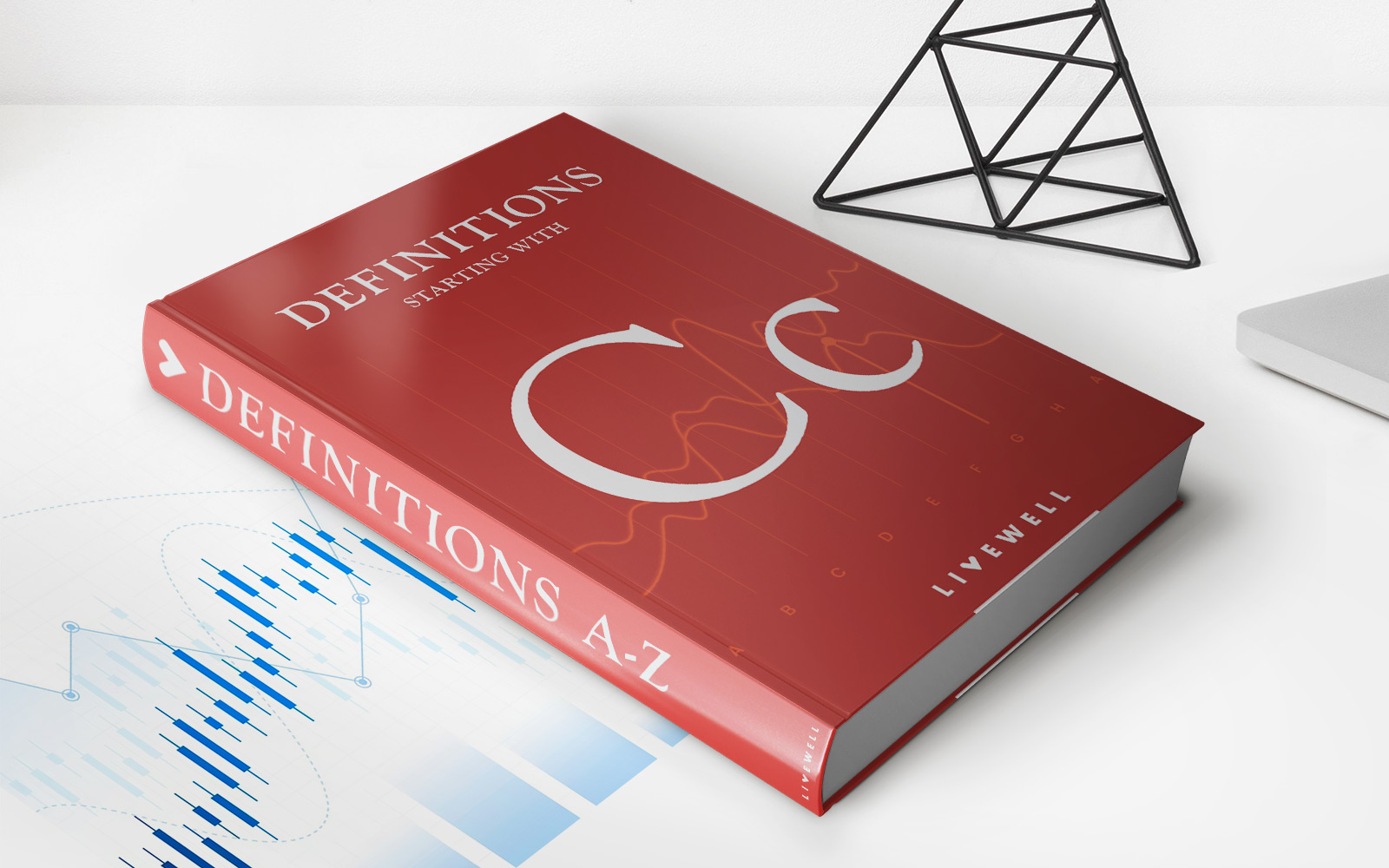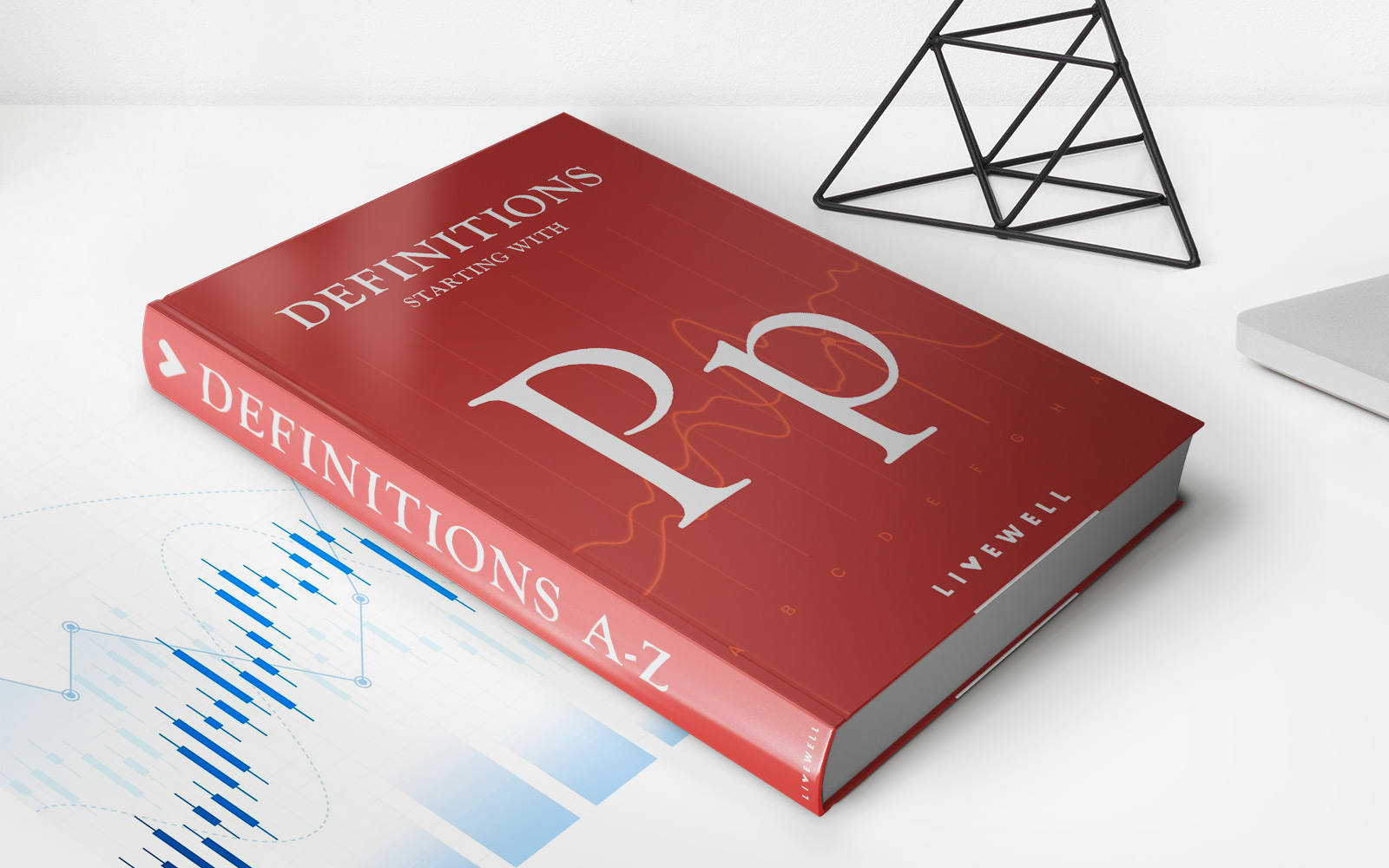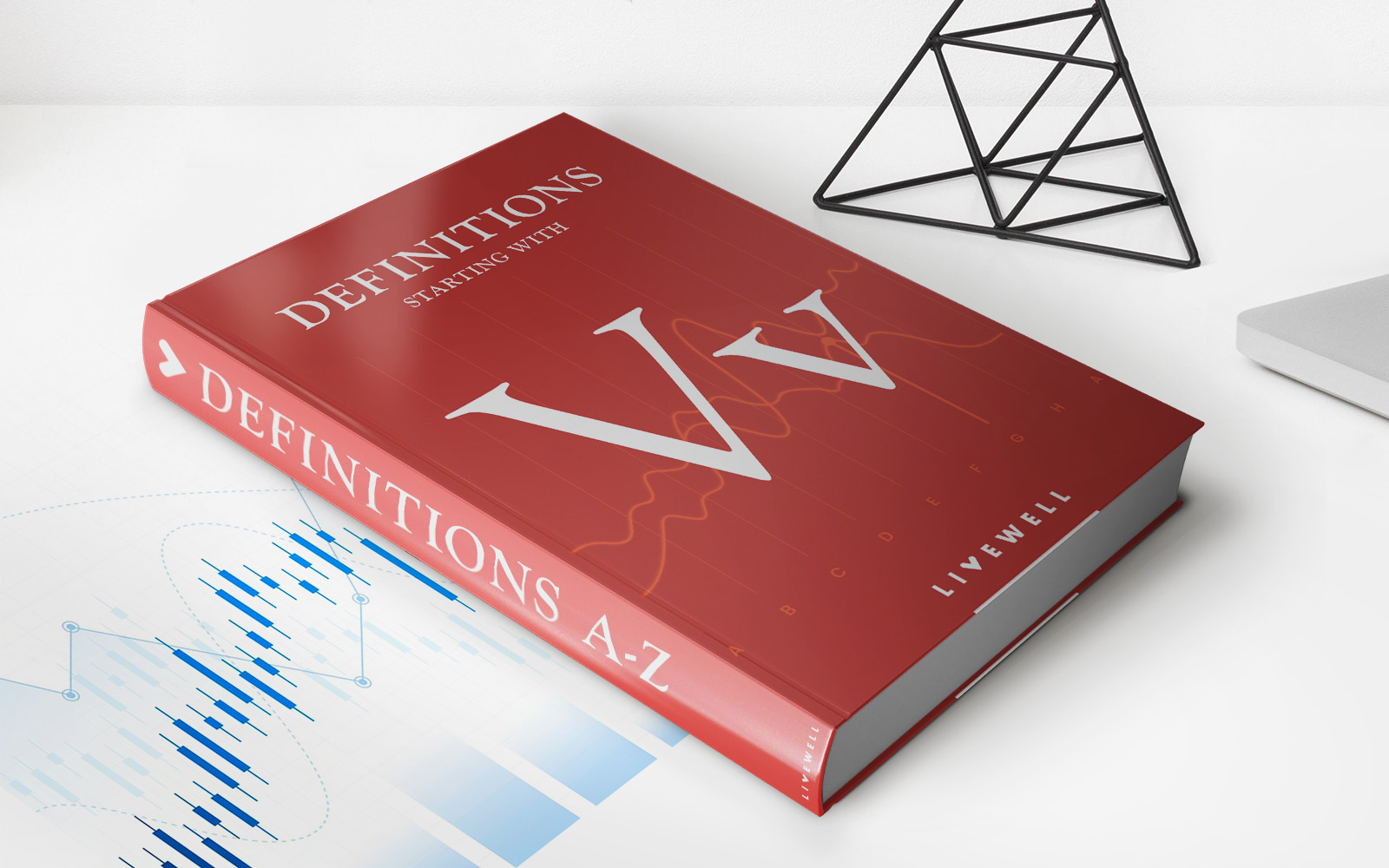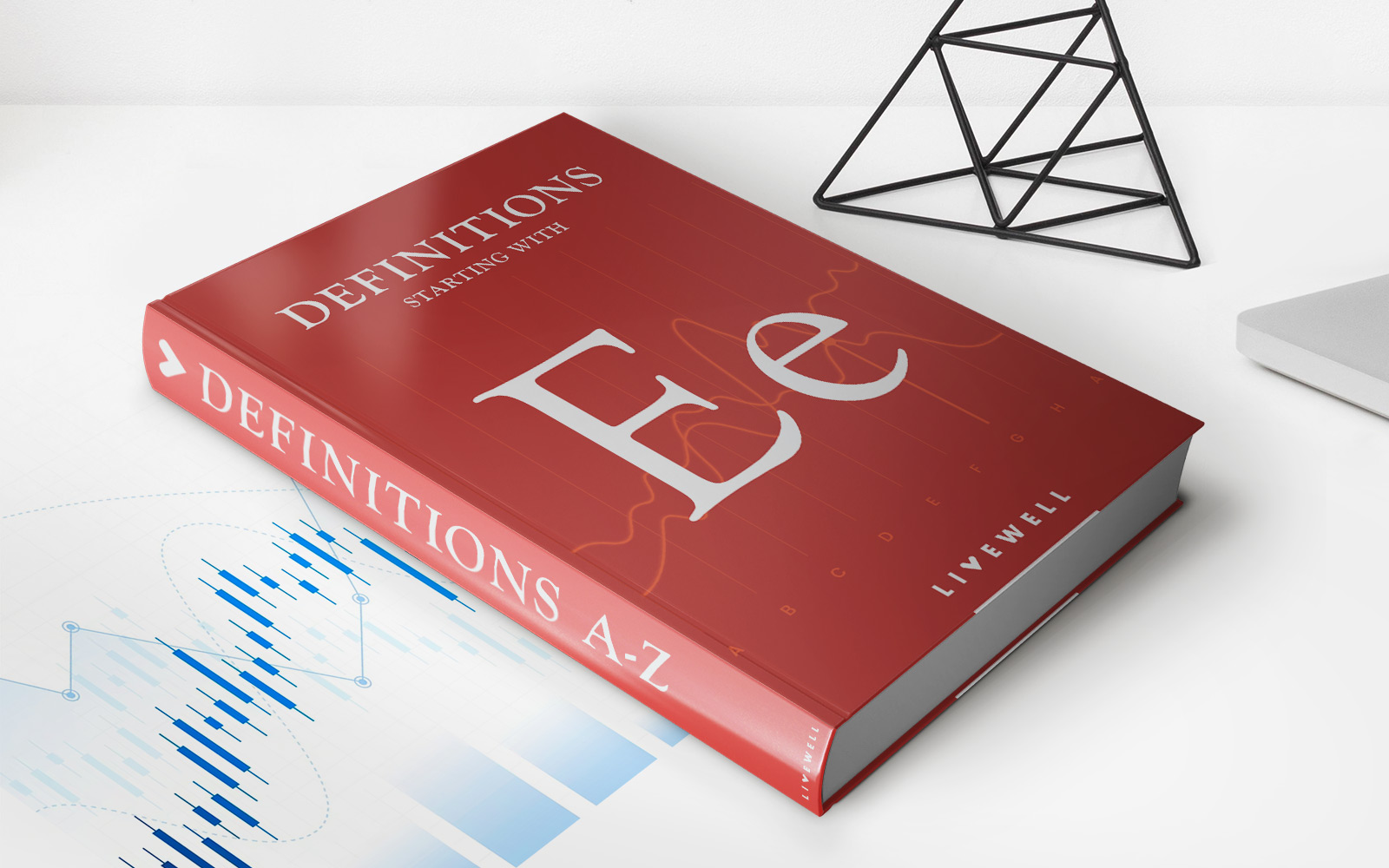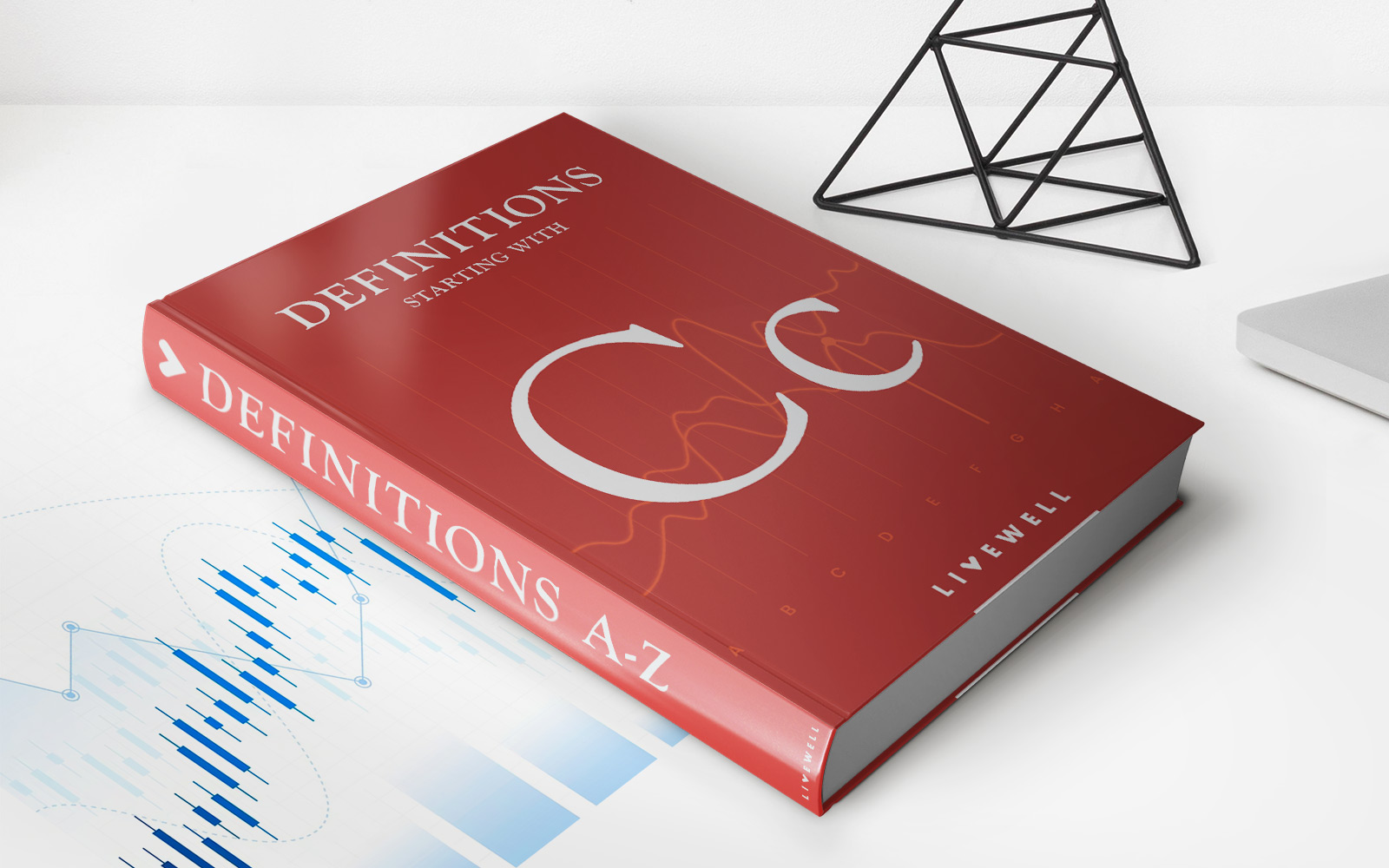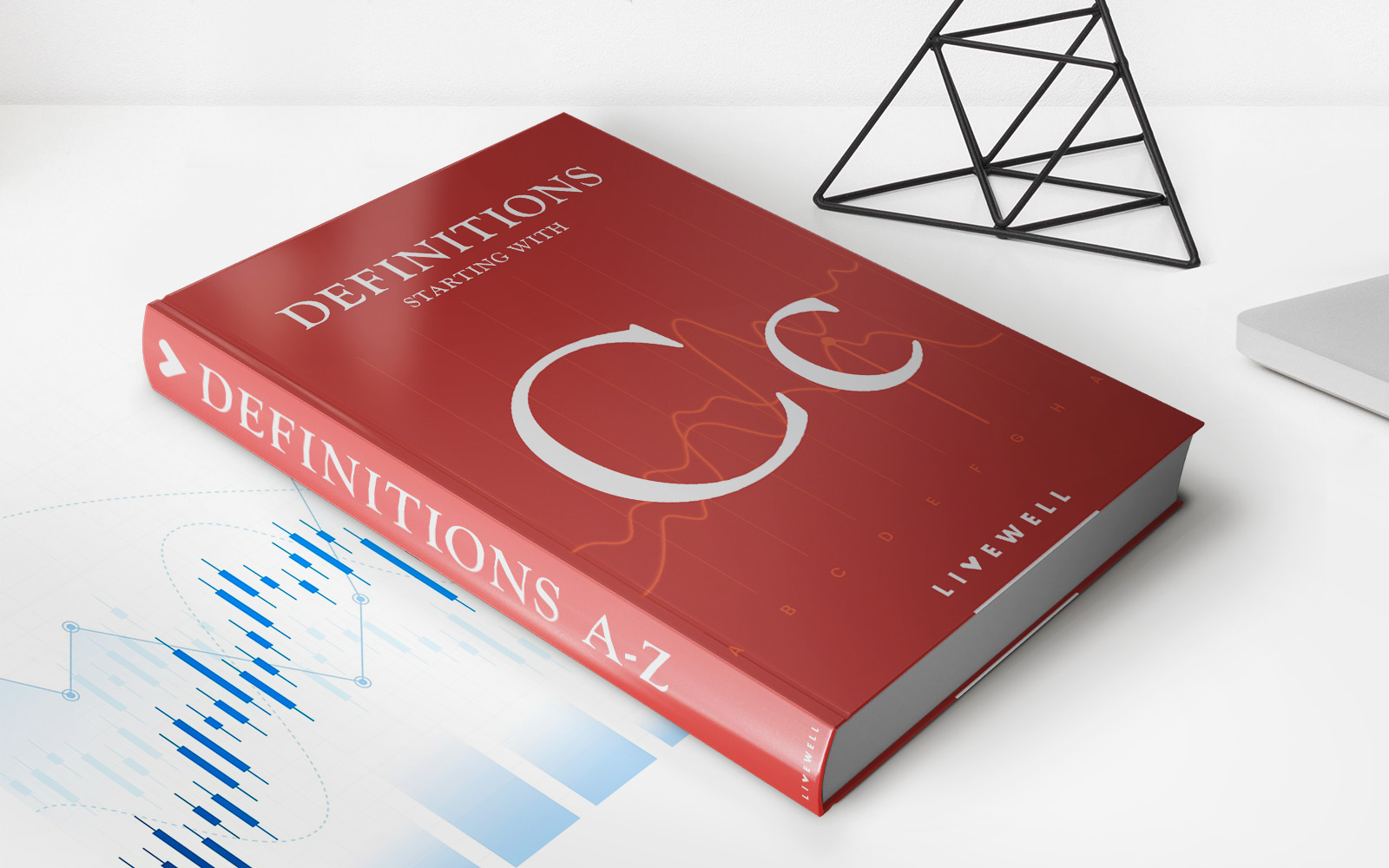

Finance
When Does A Pension Plan Terminate?
Published: November 27, 2023
Learn about the termination of pension plans in the finance industry, including key factors and timelines. Discover what happens when a pension plan ends.
(Many of the links in this article redirect to a specific reviewed product. Your purchase of these products through affiliate links helps to generate commission for LiveWell, at no extra cost. Learn more)
Table of Contents
- Introduction
- Definition of a Pension Plan
- Reasons for Pension Plan Termination
- Voluntary Pension Plan Termination
- Involuntary Pension Plan Termination
- Consequences of Pension Plan Termination
- Communication and Notification Requirements
- Process for Distributing Pension Benefits
- Legal Considerations for Pension Plan Termination
- Conclusion
Introduction
A pension plan is a financial arrangement established by an employer to provide retirement benefits to employees. It is designed to ensure that individuals have a steady income after they retire from their careers. However, there are situations where a pension plan may need to be terminated. This could be due to various reasons, such as financial constraints, changing business dynamics, or even legal requirements.
In this article, we will explore the circumstances under which a pension plan may be terminated. We will discuss both voluntary and involuntary terminations and the consequences they entail. Additionally, we will examine the communication and notification requirements, as well as the process for distributing pension benefits upon plan termination. Finally, we will touch on the legal considerations that employers must take into account when deciding to terminate a pension plan.
Understanding when and why a pension plan terminates is crucial for both employers and employees. Employers need to be aware of their responsibilities and obligations when discontinuing a pension plan, while employees want to ensure the security of their retirement benefits. So, let’s delve into the realm of pension plan termination and gain a comprehensive understanding of this important aspect of retirement planning.
Definition of a Pension Plan
A pension plan, also known as a retirement plan, is a financial arrangement that provides a source of income to individuals upon their retirement from the workforce. It is typically set up by employers to help employees save and invest for their future financial security. Pension plans come in various forms, including defined benefit (DB) plans and defined contribution (DC) plans.
In a defined benefit plan, the employer guarantees a specific retirement benefit amount to eligible employees based on factors like salary, years of service, and a predetermined formula. The employer bears the investment and longevity risks in these plans. On the other hand, in a defined contribution plan, the employer and/or employee make contributions to an individual account, which is then invested. The eventual retirement benefit depends on the amount accumulated in the account through contributions and investment returns. The employee assumes the investment risk in these plans.
Pension plans typically involve regular contributions from both the employer and the employee throughout the employee’s working years. The contributions are invested to generate growth, and upon retirement, the employee receives regular payments or a lump-sum distribution from the accumulated funds. The purpose of a pension plan is to provide financial stability during retirement, ensuring that individuals can maintain a comfortable standard of living once they cease working.
Many pension plans also offer additional features, such as disability benefits, survivor benefits, or early retirement options. These features further enhance the security and flexibility of the retirement plan, allowing individuals to adapt to unforeseen circumstances or retire earlier if desired.
Pension plans are often governed by regulatory bodies and subject to specific rules and regulations to protect the interests of both employers and employees. It is important for individuals to understand the terms and conditions of their pension plan to make informed decisions regarding their retirement savings and benefits.
Reasons for Pension Plan Termination
There are several reasons why a pension plan may be terminated. These reasons can vary depending on the financial, operational, or legal circumstances of the employer. Let’s take a closer look at some of the common reasons for pension plan termination:
- Financial Constraints: In some cases, an employer may find it challenging to meet the financial obligations associated with maintaining a pension plan. Financial difficulties, such as declining profits, increased costs, or market volatility, can put strain on the company’s ability to fund the plan adequately. In such situations, terminating the pension plan could be seen as a cost-cutting measure.
- Business Restructuring or Downsizing: When a company undergoes a significant restructuring or downsizing, it may impact the viability of keeping the pension plan. Mergers, acquisitions, or corporate reorganizations can result in a change in the employer’s benefits strategy, leading to the termination of the existing pension plan.
- Transition to a Different Retirement Benefit Structure: Employers may decide to move away from traditional pension plans and adopt alternative retirement benefit structures, such as 401(k) plans or employee stock ownership plans (ESOPs). The shift to these plans could be driven by factors like changing industry norms, cost considerations, or employee preferences for greater control over their retirement savings.
- Legal and Regulatory Requirements: Changes in laws and regulations governing pension plans may necessitate plan termination. For example, a change in tax regulations or pension funding requirements could create additional compliance burdens for the employer, making it more practical to terminate the plan.
- Inadequate Funding: In some cases, a pension plan may become underfunded, meaning that the plan’s assets are insufficient to meet the projected liabilities. This can occur due to investment losses, lower-than-expected contribution levels, or unrealistic actuarial assumptions. If the funding shortfall is substantial and cannot be rectified, the employer may be required to terminate the plan.
It is important to note that employers must comply with legal and regulatory requirements when terminating a pension plan. This includes adhering to the Employee Retirement Income Security Act (ERISA) guidelines, providing notice to plan participants, and ensuring a fair and equitable distribution of pension benefits.
Next, we will delve into the different types of pension plan terminations: voluntary and involuntary terminations.
Voluntary Pension Plan Termination
Voluntary pension plan termination occurs when the employer chooses to terminate the pension plan voluntarily. This decision is typically driven by various factors, including financial considerations, strategic business decisions, or a desire to simplify retirement benefit offerings. Let’s explore some key aspects of voluntary pension plan termination:
Employer’s Decision: In a voluntary termination, the employer makes a deliberate choice to terminate the pension plan. This decision is often made after careful evaluation of the company’s financial situation, cost-benefit analysis, and the long-term sustainability of the plan.
Communication and Notice to Participants: The employer is required to inform plan participants, retirees, and beneficiaries about the termination of the pension plan in a timely manner. This notice should include details about the plan termination, the consequences for participants, and the process for distributing pension benefits.
Impact on Employees: Employees who are actively participating in the pension plan may experience a change in their retirement benefits. Depending on the terms of the termination, they may be eligible for alternative retirement benefit options, such as a lump-sum distribution or the opportunity to roll over their pension assets into an individual retirement account (IRA) or another retirement plan.
Pension Benefit Distribution: Upon plan termination, the employer must provide a fair and equitable distribution of pension benefits to the affected plan participants. This may involve calculating the vested benefits, determining the method of benefit distribution (such as lump-sum or installment payments), and coordinating with third-party administrators or trustees to facilitate the payout process.
Legal Compliance: Employers must adhere to legal requirements, such as those outlined in the Employee Retirement Income Security Act (ERISA), when voluntarily terminating a pension plan. This includes fulfilling reporting and disclosure obligations, meeting fiduciary responsibilities, and ensuring that plan participants’ rights are upheld throughout the termination process.
It is essential for employers to communicate clearly and transparently with employees throughout the voluntary pension plan termination process. Providing support and assistance to employees in understanding their options and helping them navigate the transition is crucial for maintaining positive employee relations and trust.
Next, we will explore the concept of involuntary pension plan termination and the circumstances that may lead to such termination.
Involuntary Pension Plan Termination
Involuntary pension plan termination occurs when external factors or legal requirements force an employer to terminate the pension plan against their will. These circumstances typically arise due to financial distress, bankruptcy, or a change in the employer’s business structure. Let’s delve into the key aspects of involuntary pension plan termination:
Financial Distress: In some cases, an employer may face severe financial challenges that make it impossible to sustain the pension plan. Factors such as declining revenues, mounting debts, or economic downturns can significantly impact the employer’s ability to meet its financial obligations. As a result, the employer may be compelled to terminate the pension plan involuntarily.
Bankruptcy Proceedings: In cases where an employer files for bankruptcy, the court may require the termination of the pension plan as part of the restructuring process. The termination of the plan is aimed at addressing the financial burdens associated with the plan and ensuring equitable distribution of the remaining assets to participants.
Change in Business Structure: If a company undergoes a significant change in its business structure, such as a merger, acquisition, or divestiture, it may lead to the involuntary termination of the existing pension plan. The new business entity may have different retirement benefit policies or may choose to discontinue the plan altogether.
Legal Requirements: In some cases, regulatory authorities or legal mandates may necessitate the involuntary termination of a pension plan. For example, if a plan becomes significantly underfunded or fails to meet certain funding requirements, the law may require the plan’s termination to protect the interests of plan participants.
Impact on Employees: Employees and plan participants are directly affected by the involuntary termination of a pension plan. They may face uncertainty about the future of their retirement benefits and will need to navigate the process of receiving their pension benefits in accordance with the plan’s termination provisions.
Pension Benefit Guarantee Corporation (PBGC) Involvement: In the United States, when a defined benefit pension plan is terminated involuntarily, the Pension Benefit Guaranty Corporation (PBGC), a federal agency, may step in to protect participants’ benefits. The PBGC insures certain benefits, up to annual limits, and pays benefits if a terminated plan does not have sufficient assets to cover all promised benefits.
Understanding the circumstances and reasons behind involuntary pension plan termination is crucial for both employers and employees. Employers must fulfill their legal obligations and communicate effectively with employees during such challenging times. Employees, on the other hand, need to be aware of their rights, potential benefits, and the steps they should take to ensure a smooth transition.
Next, we will explore the consequences of pension plan termination for both employers and employees.
Consequences of Pension Plan Termination
The termination of a pension plan, whether voluntary or involuntary, can have significant consequences for both employers and employees. Let’s examine some of the key consequences associated with pension plan termination:
Employer Consequences:
- Financial Implications: Terminating a pension plan can result in immediate or long-term financial implications for employers. They may need to make lump-sum payments or establish annuity contracts to fulfill their obligations to plan participants. Additionally, termination often involves administrative and legal costs associated with the winding down of the plan.
- Employee Relations: Terminating a pension plan can strain employee relations and trust in the employer. Employees may feel disappointed, frustrated, or uncertain about their retirement benefits. Maintaining transparent communication, offering alternative retirement benefit options, and providing support throughout the transition process can help mitigate these concerns.
- Legal Compliance: Employers must ensure that they comply with applicable laws and regulations when terminating a pension plan. Failure to meet legal requirements can result in penalties, litigation, and damage to the employer’s reputation. Seeking legal and professional guidance is crucial to navigate the complex legal landscape surrounding pension plan termination.
Employee Consequences:
- Risk of Reduced Retirement Benefits: Terminating a pension plan can lead to reduced retirement benefits for employees, especially if the plan is underfunded. Employees may receive a lower pension amount or have to rely on alternative retirement savings options to make up for the shortfall.
- Transition to Alternative Retirement Benefit Options: In the event of pension plan termination, employees may have the opportunity to choose alternative retirement benefit options, such as a lump-sum distribution or rolling over their pension assets into an individual retirement account (IRA) or another retirement plan. Evaluating these alternatives and making informed decisions is important for individuals to secure their retirement savings.
- Pension Benefit Guarantee Corporation (PBGC) Involvement: If a defined benefit pension plan is terminated and does not have sufficient assets to cover all promised benefits, the Pension Benefit Guaranty Corporation (PBGC) may step in to protect participants’ benefits. However, there are limits to the amount of benefits that the PBGC guarantees, and some participants may receive reduced benefits compared to what they were entitled to under the original plan.
It is essential for both employers and employees to adapt and navigate the consequences of pension plan termination effectively. Employers should approach the termination process with careful planning and consideration for their employees’ well-being. Employees should educate themselves about their options, seek professional advice, and take proactive steps to secure their retirement finances.
Next, we will discuss the communication and notification requirements associated with pension plan termination.
Communication and Notification Requirements
Communication and notification play a vital role in the process of pension plan termination. Employers are legally required to inform plan participants, retirees, and beneficiaries about the termination of the pension plan in a clear and timely manner. Let’s explore the communication and notification requirements in more detail:
Written Notice: Employers are typically required to provide a written notice to plan participants and beneficiaries regarding the termination of the pension plan. The notice should include important details such as the effective date of the termination, the consequences for plan participants, and information on how to proceed with their retirement benefits.
Timing of Notice: Employers must provide notice of the pension plan termination within a specific timeframe, as mandated by relevant laws and regulations. The timing requirements may vary depending on the type of plan termination and the jurisdiction in which the plan is governed. It is crucial for employers to adhere to these timelines to ensure compliance and to allow affected individuals sufficient time to make informed decisions.
Content of Notice: The written notice should provide clear and concise information to individuals impacted by the pension plan termination. It should include details about the reason for the termination, any alternative retirement benefit options available, the process for determining pension benefits, and contact information for individuals who may have questions or need additional support.
Form of Notice: Employers may choose to send the notice of pension plan termination electronically or through physical mail, depending on the communication method preferred by the plan participants. In some cases, employers may utilize multiple forms of communication to ensure that all affected individuals receive the required information.
Additional Information: In addition to the written notice, employers may need to provide participants with other documents, such as summary plan descriptions, benefit statements, and information related to the applicable laws and regulations. This additional information helps individuals understand their rights and available options during the termination process.
It is important for employers to approach the communication and notification process with transparency and empathy. Plan participants will likely have questions and concerns about their retirement benefits, and providing comprehensive and timely information can help alleviate anxiety and build trust.
In the next section, we will discuss the process for distributing pension benefits upon plan termination.
Process for Distributing Pension Benefits
Upon the termination of a pension plan, employers are responsible for ensuring the fair and equitable distribution of pension benefits to plan participants and beneficiaries. The process for distributing pension benefits involves several key steps. Let’s explore them below:
Pension Benefit Calculation: The first step in the distribution process is to calculate the pension benefits that individuals are entitled to receive. This calculation may take into account factors such as years of service, salary history, and the specific terms of the pension plan.
Benefit Election Options: Plan participants typically have the option to receive their pension benefits in various ways. This may include a lump-sum payment, which provides a one-time distribution of the entire pension balance, or an annuity, which offers regular monthly payments over a specified period or for the lifetime of the participant.
Coordination with Third-Party Administrators: In some cases, employers may work with third-party administrators or trustees to oversee the distribution of pension benefits. These entities ensure that the correct amount is paid to each recipient and handle the necessary paperwork and tax-related requirements.
Communication and Documentation: Employers must communicate with plan participants to explain their benefit options, the process for selecting a distribution method, and the documentation required to facilitate the distribution. This involves providing individuals with the necessary forms and instructions to make their election and ensuring that they have a clear understanding of the implications of their choice.
Government Regulatory Requirements: Employers must comply with government regulatory requirements related to tax withholding, reporting, and other relevant regulations concerning the distribution of pension benefits. This ensures that the appropriate taxes are withheld and reported accurately to the relevant tax authorities.
Pension Benefit Guarantee Corporation (PBGC) Involvement: If the pension plan is covered by the Pension Benefit Guaranty Corporation (PBGC) and the plan does not have sufficient assets to cover all promised benefits, the PBGC may step in to pay certain pension benefits up to certain limits. Employers need to coordinate with the PBGC in cases where their plan qualifies for PBGC protection.
Timing of Benefit Distribution: Employers should strive to distribute pension benefits promptly and in accordance with legal requirements. This ensures that plan participants can access their retirement savings in a timely manner and effectively plan for their future financial needs.
It is important for employers to provide clear communication and support to plan participants throughout the distribution process. This includes addressing any questions or concerns that individuals may have and ensuring that the distribution of pension benefits is handled accurately and efficiently.
In the next section, we will explore some of the legal considerations that employers should keep in mind when considering the termination of a pension plan.
Legal Considerations for Pension Plan Termination
Pension plan termination is a complex process that must be carefully navigated to comply with various legal obligations. Employers must consider several important legal considerations when contemplating the termination of a pension plan. Let’s explore some key legal considerations:
Employee Retirement Income Security Act (ERISA): Employers must comply with the provisions of the Employee Retirement Income Security Act (ERISA) when terminating a pension plan. ERISA establishes fiduciary responsibilities, reporting and disclosure requirements, and safeguards for plan participants’ rights. Employers must ensure that they fulfill their obligations under ERISA and follow the appropriate procedures during the termination process.
Notice Requirements: Employers are typically required to provide advance notice to plan participants and beneficiaries regarding the pension plan termination. The notice should include important details such as the effective date of termination, the impact on pension benefits, and information on available alternatives or options.
Consultation with Legal Counsel: It is prudent for employers to seek guidance from legal counsel experienced in pension law when contemplating pension plan termination. Legal experts can help employers understand their obligations, navigate complex legal requirements, and ensure compliance throughout the termination process.
Pension Plan Documents: Employers should review the pension plan documents carefully to understand the specific provisions and requirements related to plan termination. The plan documents outline the rights and benefits of plan participants, the procedures to be followed, and the distribution methods to be implemented.
Protected Benefits: Employers must take into account any protected benefits that participants may be entitled to under the pension plan or applicable laws. Protected benefits can include early retirement benefits, disability benefits, or survivor benefits. Employers must ensure that these protected benefits are appropriately accounted for and provided to eligible individuals even upon the termination of the plan.
Regulatory Filings: Employers may be required to file certain regulatory forms or notifications with governmental agencies, such as the Internal Revenue Service (IRS) and the Pension Benefit Guaranty Corporation (PBGC). These filings ensure compliance with tax laws, provide information on the plan termination, and facilitate the disbursement of pension benefits.
Participant Rights and Appeals: Plan participants have rights and avenues for appeals in the event of a pension plan termination. Employers should be prepared to address participant inquiries, provide necessary information, and if applicable, guide participants through the appeals process to ensure fairness and adherence to legal requirements.
Understanding and adhering to the legal considerations surrounding pension plan termination is crucial to protect the rights of plan participants, fulfill regulatory obligations, and mitigate the risk of legal disputes.
Next, we will conclude our exploration of pension plan termination and summarize the key points discussed throughout the article.
Conclusion
Pension plan termination is a significant event that can arise due to various factors, such as financial constraints, business restructuring, or legal requirements. Whether voluntary or involuntary, the termination of a pension plan has consequences for both employers and employees. It is essential for both parties to navigate this process with careful consideration for their financial well-being and legal obligations.
We explored the reasons behind pension plan termination, including financial difficulties, business restructuring, and changing retirement benefit strategies. Voluntary terminations occur when employers choose to discontinue the plan, while involuntary terminations occur due to external factors or legal requirements.
Throughout the termination process, employers must ensure clear and timely communication with plan participants and adhere to legal requirements. Providing written notice, explaining benefit distribution options, and offering support are crucial in maintaining trust and minimizing employee concerns.
The distribution of pension benefits upon plan termination requires accurate calculations, consideration of alternative benefit options, and coordination with third-party administrators if necessary. Employers must also fulfill legal obligations, such as compliance with ERISA, ensuring proper notice, and meeting reporting and disclosure requirements.
Legal considerations, including ERISA compliance, consultation with legal counsel, and safeguarding protected benefits, are of utmost importance for employers during the termination process. Adhering to these considerations helps protect the rights of participants and mitigate potential legal risks.
In conclusion, pension plan termination can be a complex undertaking, but with careful planning, adherence to legal requirements, and transparent communication, employers can navigate the process successfully. Employees should proactively educate themselves about their options, seek professional advice, and make informed decisions to secure their retirement savings.
Ultimately, understanding the reasons, consequences, and legal considerations associated with pension plan termination empowers both employers and employees to navigate this significant aspect of retirement planning with confidence and clarity.
